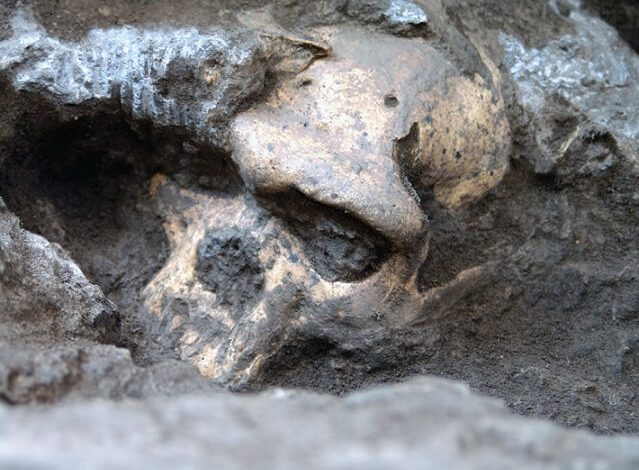Skull 5 – A Million Years Old Human Skull Forced Scientists To Rethink Early Human Evolution
Researchers have traditionally used differences among fossilized remains of ancient humans to define separate species among the earliest members of our Homo genus — Homo erectus, Homo habilis, and Homo rudolfensis, for example.

But an amazing new skull found in a republic of Georgia suggests that the specimens previously representing different species could come from a single, evolving lineage, according to a new report published in Science.
So-called “Skull 5” was dug up in Dmanisi, Georgia, between 2000 and 2005. It’s believed to date back roughly 1.8 million years and comes from the same time period and location as four other skulls found earlier at Dmanisi.
Skull 5 is unique not only because it is the most complete Homo skull ever found, but it also looks very different from the other skulls found at this site. It combines a small braincase — about one-third the size of modern humans — with a large face that has a massive jaw and big teeth.
“This is a strange combination of features that we didn’t know before in the early Homo,” Marcia S. Ponce de León, from the Anthropological Institute and Museum in Switzerland, said in a media conference.

Researchers have found fragments of other skulls from this time period — from other places in Africa and also Dmanisi — but they are not complete and belong to adolescents.
Skull 5 provides the first evidence of how the face and jawbone of the full-grown early Homo were “oriented and positioned relative to the braincase,” according to the study.
Even though the Dmanisi fossils have different physical traits, researchers believe that all five skulls come from the same ancient population — a species that they say is most consistent with Homo erectus because of particular traits, like the shape of the braincase.

The strong variation seen within what’s believed to be a single species means that other Homo fossils from Africa could belong to that same, single lineage — they just have diverse appearances. “[The Dmanisi finds] look quite different from one another, so it’s tempting to publish them as different species,” Christoph Zollikofer from the Anthropological Institute and Museum said in a statement.”Yet we know that these individuals came from the same location and the same geological time, so they could, in principle, represent a single population of a single species.”
Researchers point out that the variations in brain size among the Dmanisi skulls are analogous to what we would see among five randomly chosen humans or chimpanzees today.
“It’s about the difference between a brain of 1.2 litres and 1.6 or 7 litres,” Zollikofer told reporters. The complete skull, “skull 5,” was found alongside the remains of four other human ancestors.
Archaeologists are still not sure if African fossils that pre-date the Dmanisi specimens — anything that is older than 1.8 to 1.9 million years and currently classified as Homo habilis or Homo rudolfensis — can be lumped into one species because the fossil remains are too scattered and not in good condition.
It’s also not clear what happened to Homo erectus after the date associated with the Dmanisi finds.
“We now have one global human species,” Zollikofer said. “What we can infer is that 1.8 million years ago there were another single global species.” He added: “We don’t know how Homo erectus connects to ourselves. That is the big question.”
